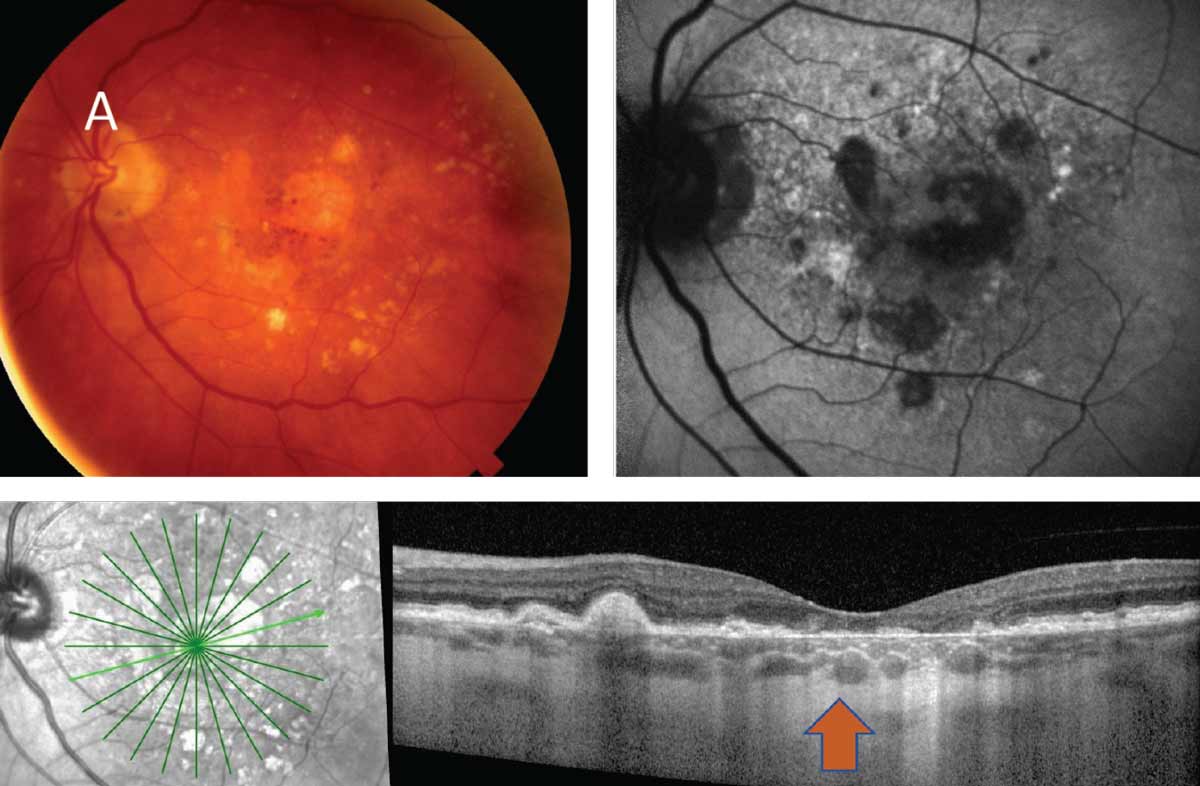 |
| Filtering the shorter wavelengths of light using blue-light filtering IOLs could provide protection against macular atrophy progression. Photo: Mohammad Rafieetary, OD. Click image to enlarge. |
In the neovascular form of AMD (wet AMD), concurrent macular atrophy characterized by the development of atrophic areas that grow steadily over time results in corresponding scotoma and visual loss from foveal involvement. Blue-light filtering intraocular lenses (IOLs) are designed to approximate light filtration of the natural crystalline lens by a chromophore that absorbs short-wavelength light (400nm to 460nm). Laboratory and animal models have demonstrated that short-wavelength light potentially leads to phototoxic retinal damage. Is that borne out in humans?
A recent study published in the American Journal of Ophthalmology, assessed the effect of these IOLs on the development and progression of macular atrophy in eyes with wet AMD. It determined that participants who received blue-light filtering IOLs did not show reduced macular atrophy incidence rates compared with those who received non-filtering IOLs. However, blue-blocking IOLs were associated with a lower macular atrophy progression rate over the eight-year follow-up.
The study included 373 eyes of 373 wet AMD patients (mean age 78.6 at surgery, 67.4% female) with anti-VEGF injections who underwent uneventful cataract surgery, where 206 eyes were implanted with blue-light filtering IOLs and 167 with standard IOLs. The two groups had comparable follow-up times (3,164 days vs. 3,180 days, respectively) and other baseline parameters (age, sex, corrected distance visual acuity, macular thickness and cumulative number of anti-VEGF injections).
Nine pre-existing and 77 new-onset macular atrophy cases were detected, with a similar distribution between both blue-light filtering implants and non-filtering ones. Both univariate and multivariate regression analyses adjusted for age and gender showed that blue-light filtering IOLs were comparable to non-filtering IOLs regarding hazard ratio for new-onset macular atrophy (HR: 1.24).
“The current study, although involving a smaller cohort, is the largest to date to investigate the role of blue-light filtering IOLs in preventing the development and progression of macular atrophy in wet AMD eyes,” the researchers wrote in their paper. “Slower progression rates could be demonstrated for patients implanted with these IOLs, implying a retinal protective effect most probably resulting from the blue-light absorption.”
The study concluded that further research is warranted to examine whether these findings can be generalized to a non-wet AMD cohort as well.
Achiron A, Trivizki O, Knyazer B, et al. The effect of blue-light filtering intraocular lenses on the development and progression of macular atrophy in eyes with nAMD. Am J Ophthalmol. April 28, 2024. [Epub ahead of print]. |


